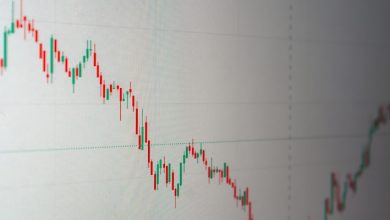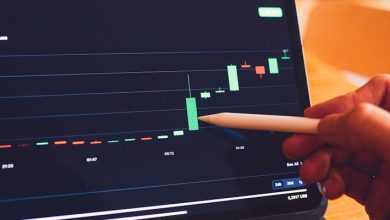How to Manage Risk in High-Volatility Crypto Markets

- Understanding the Nature of High-Volatility Crypto Markets
- Key Factors Contributing to Volatility in Cryptocurrency Trading
- Strategies for Identifying and Assessing Risks in Crypto Investments
- Implementing Risk Management Techniques in High-Volatility Markets
- The Role of Diversification in Mitigating Risk in Cryptocurrency Trading
- Best Practices for Navigating High-Volatility Crypto Markets
Understanding the Nature of High-Volatility Crypto Markets
Cryptocurrency markets are known for their high volatility, which can lead to both significant gains and losses for investors. Understanding the nature of high-volatility crypto markets is crucial for managing risk effectively.
One key aspect to consider is the unpredictable price movements that can occur in these markets. Prices of cryptocurrencies can fluctuate wildly in a short period of time, making it essential for investors to be prepared for sudden changes.
Another factor to take into account is the influence of external events on crypto prices. News, regulations, and market sentiment can all impact the value of cryptocurrencies, adding to the volatility of the market.
Moreover, the lack of regulation in the crypto space can contribute to increased volatility. Without clear guidelines and oversight, investors may face higher risks when trading cryptocurrencies.
Overall, being aware of the unique characteristics of high-volatility crypto markets is essential for managing risk effectively and making informed investment decisions.
Key Factors Contributing to Volatility in Cryptocurrency Trading
There are several key factors that contribute to the volatility in cryptocurrency trading, making it essential for traders to manage risk effectively. Understanding these factors can help traders make more informed decisions and mitigate potential losses.
- Market Sentiment: The overall sentiment of traders and investors can heavily influence the price of cryptocurrencies. Positive news or developments can lead to a surge in prices, while negative news can cause a sharp decline. Monitoring market sentiment is crucial for predicting price movements.
- Regulatory Environment: Cryptocurrencies are often subject to changing regulations, which can impact their value. News of government crackdowns or new regulations can lead to increased volatility in the market. Traders should stay informed about regulatory changes to anticipate market reactions.
- Liquidity: The liquidity of a cryptocurrency refers to how easily it can be bought or sold without significantly impacting its price. Low liquidity can lead to sharp price fluctuations, as large buy or sell orders can move the market. Traders should be cautious when trading illiquid cryptocurrencies.
- Market Manipulation: Cryptocurrency markets are susceptible to manipulation due to their decentralized and unregulated nature. Whales, or individuals with large amounts of cryptocurrency, can influence prices by executing large trades. Traders should be aware of potential manipulation and its impact on market volatility.
- Technological Developments: Innovations in blockchain technology and new cryptocurrency projects can also contribute to volatility in the market. Positive developments such as new partnerships or improved technology can drive prices up, while security breaches or technical issues can lead to price drops. Traders should stay informed about technological advancements in the industry.
Strategies for Identifying and Assessing Risks in Crypto Investments
One effective way to manage risks in high-volatility crypto markets is to implement strategies for identifying and assessing potential risks in crypto investments. By being proactive and diligent in evaluating risks, investors can make more informed decisions and mitigate potential losses. Here are some key strategies to consider:
– Conduct thorough research on the cryptocurrency project and its underlying technology to understand the potential risks and challenges associated with the investment.
– Stay informed about market trends, regulatory developments, and news that could impact the value of the cryptocurrency.
– Diversify your investment portfolio to reduce the impact of a single asset’s volatility on your overall investment.
– Set clear investment goals and risk tolerance levels to guide your decision-making process and avoid impulsive trades.
– Consider using risk management tools such as stop-loss orders or hedging strategies to protect your investment from significant losses.
– Regularly review and reassess your investment strategy to adapt to changing market conditions and mitigate new risks that may arise.
By following these strategies for identifying and assessing risks in crypto investments, investors can better navigate the unpredictable nature of high-volatility crypto markets and protect their investment capital.
Implementing Risk Management Techniques in High-Volatility Markets
One effective way to manage risk in high-volatility crypto markets is by implementing various risk management techniques. These techniques can help investors protect their investments and minimize potential losses. Here are some strategies to consider:
- Diversification: One of the most common risk management techniques is diversifying your investment portfolio. By spreading your investments across different cryptocurrencies, you can reduce the impact of volatility on your overall portfolio.
- Stop-loss orders: Setting stop-loss orders can help you limit your losses in case the price of a cryptocurrency suddenly drops. This technique allows you to automatically sell your assets if they reach a certain price, protecting you from further losses.
- Hedging: Another risk management technique is hedging, which involves taking positions that will offset potential losses in your portfolio. This can be done by shorting a cryptocurrency or investing in derivatives such as futures contracts.
- Position sizing: Proper position sizing is crucial in high-volatility markets. By carefully determining the amount of capital to allocate to each trade based on your risk tolerance, you can protect your portfolio from significant losses.
By incorporating these risk management techniques into your investment strategy, you can navigate the challenges of high-volatility crypto markets with more confidence and resilience. Remember that no strategy is foolproof, but by being proactive and disciplined in managing your risks, you can increase your chances of success in this dynamic market environment.
The Role of Diversification in Mitigating Risk in Cryptocurrency Trading
Diversification plays a crucial role in managing risk when trading cryptocurrencies in highly volatile markets. By spreading your investments across different types of cryptocurrencies, you can reduce the impact of a single coin’s price fluctuations on your overall portfolio. This strategy helps to mitigate the risk of significant losses if one cryptocurrency underperforms.
When diversifying your cryptocurrency holdings, consider investing in a mix of large-cap, mid-cap, and small-cap coins. Large-cap coins such as Bitcoin and Ethereum are generally less volatile but offer lower potential returns. Mid-cap coins can provide a balance of risk and reward, while small-cap coins have higher volatility but also the potential for substantial gains.
Furthermore, diversifying across various sectors within the cryptocurrency market, such as decentralized finance (DeFi), non-fungible tokens (NFTs), and privacy coins, can also help spread risk. This approach ensures that your portfolio is not overly exposed to the performance of a single sector, reducing the impact of sector-specific market fluctuations.
In addition to diversifying across different cryptocurrencies and sectors, consider spreading your investments across multiple exchanges. This can help reduce the risk of exchange-specific issues such as hacks or regulatory crackdowns. By using multiple exchanges, you can also take advantage of price discrepancies between platforms and access a wider range of trading pairs.
Overall, diversification is a key strategy for mitigating risk in cryptocurrency trading. By spreading your investments across multiple assets, sectors, and exchanges, you can protect your portfolio from the impact of adverse market conditions and improve your chances of achieving long-term success in the volatile world of cryptocurrencies.
Best Practices for Navigating High-Volatility Crypto Markets
When navigating high-volatility crypto markets, it is crucial to follow best practices to minimize risk and maximize potential returns. Here are some key strategies to keep in mind:
- 1. Diversify your portfolio: Spread your investments across different cryptocurrencies to reduce the impact of market fluctuations on any single asset.
- 2. Set stop-loss orders: Implement stop-loss orders to automatically sell a cryptocurrency if its price drops below a certain level, protecting your investment from significant losses.
- 3. Stay informed: Stay up-to-date with the latest news and trends in the crypto market to make informed decisions about buying or selling assets.
- 4. Avoid emotional trading: Keep your emotions in check and base your decisions on analysis and research rather than fear or greed.
- 5. Use technical analysis: Utilize technical analysis tools to identify trends and patterns in price movements, helping you make more accurate predictions.
By following these best practices, you can navigate high-volatility crypto markets with confidence and reduce the impact of market fluctuations on your investments.



